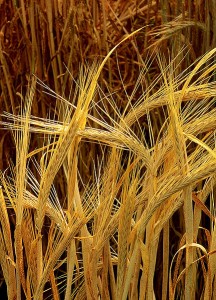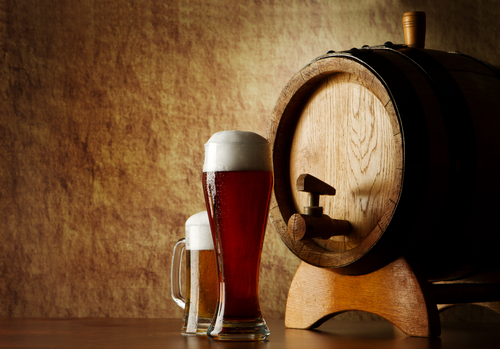It started two Christmases ago. That’s when I learned that beer is the new wine. My nephew, a film student, came home from McGill expounding on the finer points of Belgian Gueuze and German Dunkelweizen. And since then, foodie-friends have all but abandoned the pleasures of the grape for the more arcane delight of hops. Now when my husband and I stroll towards the beer cooler in our local liquor store, a burly, heavily tattooed clerk intercepts us to rave about Rogue’s Yellow Snow IPA or Longboat Chocolate Porter.
It turns out, though, that beer has a very long history as a luxury drink. In a cool new paper, Simon Fraser University archaeologist Brian Hayden and two colleagues delve into the murky origins of beer. In all probability, beer started out as something more than mere suds for slaking thirst at the end of a long, hot day. Indeed, if Hayden and his team are right it was a bevvie brewed at considerable trouble and consumed only at the most important social occasion of the day: feasts.
In a cool new paper, Simon Fraser University archaeologist Brian Hayden and two colleagues delve into the murky origins of beer. In all probability, beer started out as something more than mere suds for slaking thirst at the end of a long, hot day. Indeed, if Hayden and his team are right it was a bevvie brewed at considerable trouble and consumed only at the most important social occasion of the day: feasts.
Hayden’s research has long focussed on what anthropologists call complex hunter-gatherers—affluent folks who lived for much of the year in sprawling villages and who stored massive quantities of food there. The aboriginal inhabitants of the Northwest Coast were prime examples: they staked out large villages along major salmon rivers and caught and wind-dried vast stores of fish —enough to tide them during the long winter months. Indeed, the richest households in these villages amassed enough food to throw great feasts—potlatches—to impress their neighbours.
In theory, complex hunter gatherers had enough time on their hands to make beer and plenty of occasions in which to serve it. So Hayden and his colleagues combed through ethnographic accounts to see whether any of these groups brewed beer in modern times. While there wasn’t a shred of evidence for beer-making among simple hunter-gatherers, there certainly was among complex hunter-gatherers. Japan’s Ainu, for example, regularly brewed beer from millet and consumed it as a sacred drink.
Had ancient complex groups done the same? Hayden and his colleagues began poring over published archaeological evidence. In the Levant, a region of the eastern Mediterranean, complex hunter-gatherers known as the Natufians were prime candidates. The Natufians flourished from 13,000 to 9500 BCE, and during that time they hunted deer, wild boars and aurochs, and gathered wild barley and wild einkorn wheat—cereal grains well suited for brewing beer.
The Natufians made had large stone containers that closely resemble the brewing pots favored by Asian hill tribes today. They had ready access to the yeast needed to ferment a grain mash. Genetic studies have shown that brewer’s yeast, Saccharomyces cerevisiae , originated in the Near East some 10,000 to 12,000 years ago. Today it can be found in honey and on skin of grapes and other high-sugar fruit—natural sweeteners that the Natufians may have used to improve the taste of their grain mash. In other words, these early hunter-gatherers had everything they needed to make beer.
Much evidence suggests that the later Natufians threw great parties. In special places near their villages or at burial sites, they built huge hearths, consumed large quantities of meat, served food in beautiful serving dishes and gave each other pretty gifts, including shiny imported shells. Beer, with its mild buzz, would have been the icing on the cake at these events. But the Natufians had to work hard to gather the ingredients: Wild stands of grain in the Levant were spotty. Indeed, current research suggests that some Natufians walked as much as 60 to 70 kilometers to reach the nearest stands of rye and wheat.
Natufian beer might not inspire rave reviews from the guy at my liquor store. But I bet it went very well with roast auroch.
Beer photo from Shutterstock; Barley, courtesy U.S. Department of Agriculture.

The first time I read the word Natufians was yesterday, in Charles Mann’s NG article “The Birth of Religion”. And now here they are again today.
I saw a BBC show about Vikings, where someone reconstructed a beer recipe from dregs they’d found in Viking cups, then made some. Apparently it was genuinely delicious, so who knows — Natufian beer might be up to snuff for modern tastes too.